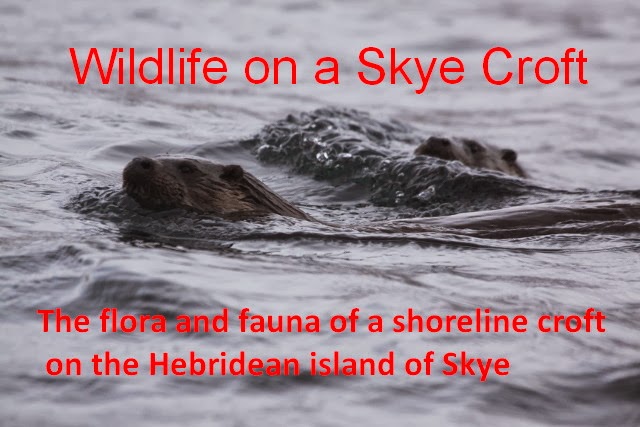There are around 2,500 species of moths in the UK, most of which are night flying. In Scotland the species count is roughly half that figure at approximately 1,300, according to Scottish Natural Heritage. Moving north the number of species reduces further and combined with a restricted range of habitats, Brian Neath, the county recorder for both West Ross and Skye has records for only around 320 species or so for Skye and Lochalsh. There may be more but the area is under-recorded.
Many night-flying moths are attracted to a light, and there are two main designs which use this principle to trap moths without causing them harm. The Robinson trap is I guess is more professional and efficient than the Skinner trap, but the latter has the advantage of being cheaper and can easily be built at home. I built one about 3 years ago from a design I found on the internet - sadly I can no longer find the link.
We have probably put the trap out a dozen times or so, mostly in the summer, and to date we have found approximately 85 species. This year I am trying to put the trap out each month, because the time of flight of most moth species is restricted to particular times. So last weekend with a clear dry night, and no wind, though maybe a bit cool, I put the trap out near the garden and the pine and spruce trees. I caught only one moth, a Dotted Border, which is described as common throughout Britain. In August by comparison the count would be over 100.
The next night I found another species on the kitchen window, this being a Mottled Grey which is anther common species, in flight between March and April (previously I thought it was a Pale Brindled Beauty but Steve Terry corrected me).
We run the trap throughout the night, then photograph the moths at dawn so that we can identify them. We then cover the trap throughout the day and release the moths the following evening, so that the moths avoid capture by birds. There are two or three really good books devoted to moth id in the UK and there is an excellent website http://ukmoths.org.uk covering most of the moths found here. Even so a confirmed species identification can be challenging, and we are very fortunate that Brian Neath is readily available to help with determinations.
It is interesting that the popular reaction to moths is quite different to that to butterflies (of which there are only around 60 species in Britain) even though they belong to the same order of insects, Lepidoptera. Butterflies are attractive and beautiful, the subject of paintings and poetry. Moths by contrast are creatures of the night, and are just a bit too scary. They also eat clothes. Moths need a PR strategy.

.JPG)
.JPG)
No comments:
Post a Comment